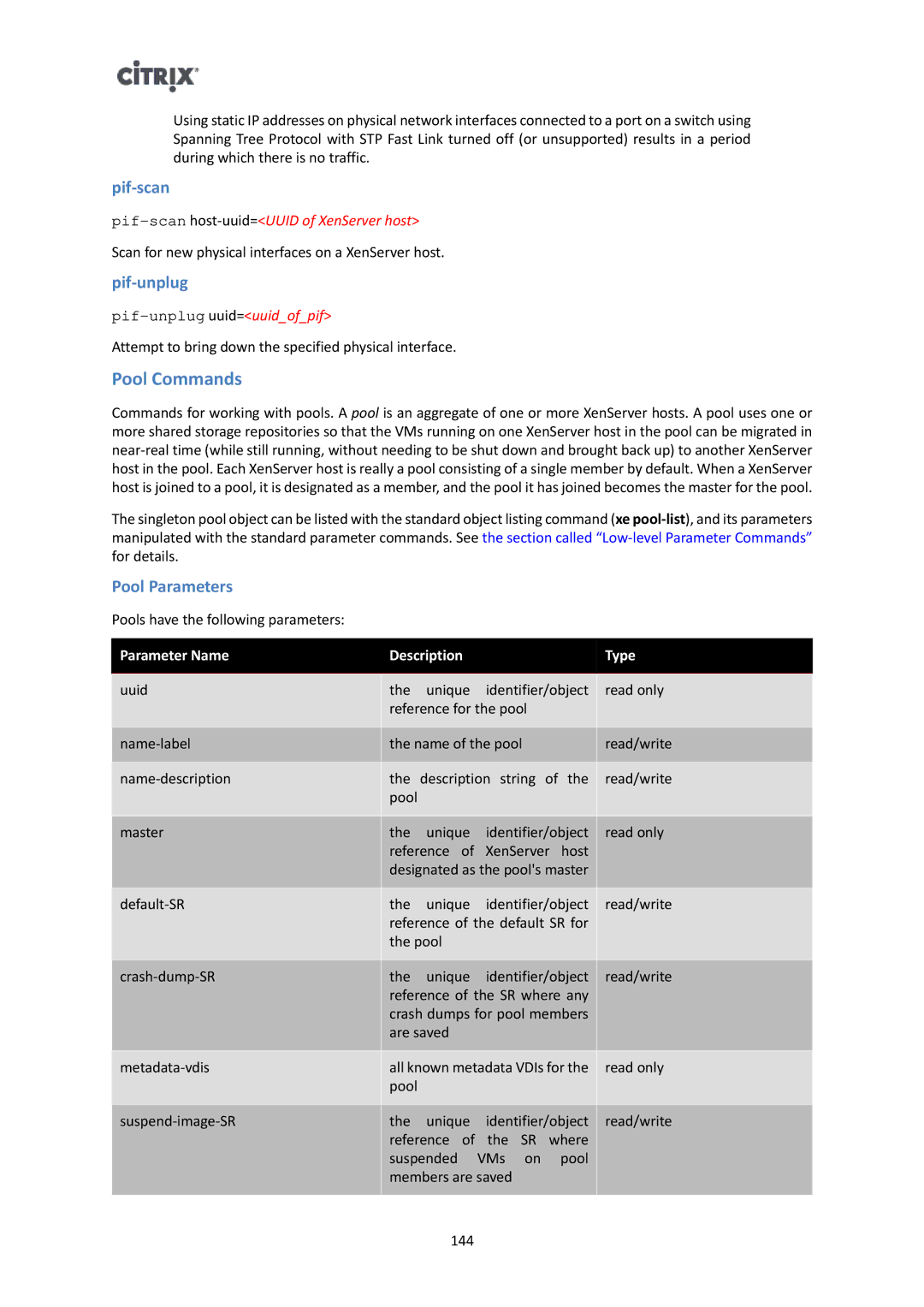Using static IP addresses on physical network interfaces connected to a port on a switch using Spanning Tree Protocol with STP Fast Link turned off (or unsupported) results in a period during which there is no traffic.
pif-scan
Scan for new physical interfaces on a XenServer host.
pif-unplug
pif-unplug uuid=<uuid_of_pif>
Attempt to bring down the specified physical interface.
Pool Commands
Commands for working with pools. A pool is an aggregate of one or more XenServer hosts. A pool uses one or more shared storage repositories so that the VMs running on one XenServer host in the pool can be migrated in
The singleton pool object can be listed with the standard object listing command (xe
Pool Parameters
Pools have the following parameters:
Parameter Name | Description |
|
| Type | |
|
|
|
|
| |
uuid | the | unique | identifier/object | read only | |
| reference for the pool |
|
| ||
|
|
|
| ||
the name of the pool |
| read/write | |||
|
|
| |||
the description string of the | read/write | ||||
| pool |
|
|
|
|
|
|
|
|
| |
master | the | unique | identifier/object | read only | |
| reference of | XenServer | host |
| |
| designated as the pool's master |
| |||
|
|
|
|
| |
the | unique | identifier/object | read/write | ||
| reference of the default SR for |
| |||
| the pool |
|
|
| |
|
|
|
|
| |
the | unique | identifier/object | read/write | ||
| reference of the SR where any |
| |||
| crash dumps for pool members |
| |||
| are saved |
|
|
| |
|
|
| |||
all known metadata VDIs for the | read only | ||||
| pool |
|
|
|
|
|
|
|
|
| |
the | unique | identifier/object | read/write | ||
| reference of the SR where |
| |||
| suspended | VMs on | pool |
| |
| members are saved |
|
| ||
|
|
|
|
|
|
144
